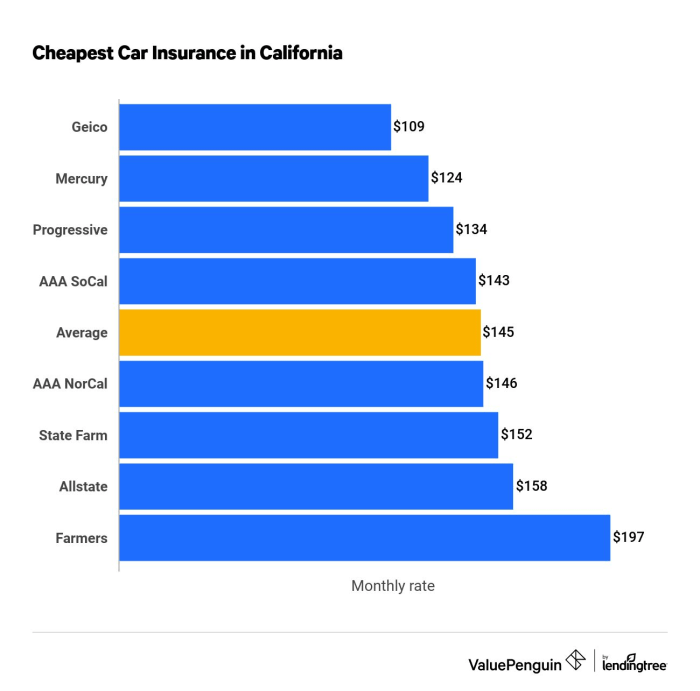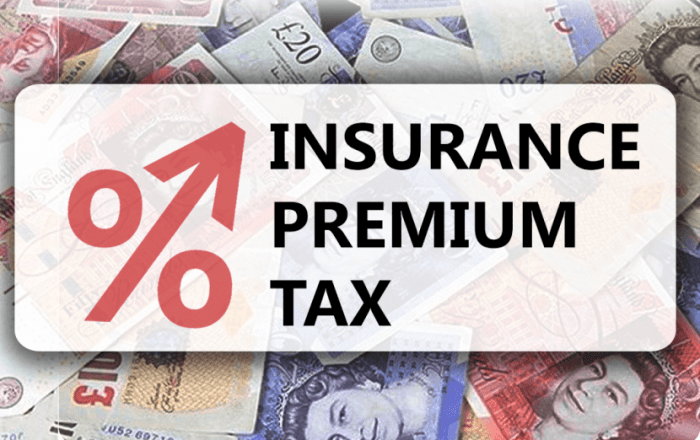Navigating the complexities of insurance can be challenging, especially when factoring in state-specific taxes. California, with its dynamic economy and robust insurance market, presents a unique landscape regarding insurance premium taxation. This guide delves into the intricacies of the California insurance premium tax rate, exploring its current standing, historical trends, comparisons with other states, and potential future implications for both consumers and the insurance industry.
We will examine how this tax impacts the overall cost of insurance, analyze its effects on different income groups, and investigate the legislative and regulatory frameworks governing its implementation. By understanding these aspects, individuals and businesses can make more informed decisions about their insurance needs and contribute to a more transparent and equitable insurance market in California.
Current California Insurance Premium Tax Rate

California imposes a tax on insurance premiums, a significant source of revenue for the state. Understanding this tax is crucial for both insurance companies and consumers. This section details the current rate, applicable insurance types, and calculation methods.
Current Tax Rate and Applicable Insurance Premiums
The current California insurance premium tax rate is 2.35%. This tax applies to most types of insurance premiums collected in the state. However, certain types of insurance are exempt or subject to different rates, as detailed below. The tax applies to premiums paid for insurance policies covering risks within California. This means that even if the insurance company is based outside of California, premiums collected for policies covering California risks are taxable.
Tax Calculation
The tax is calculated as a simple percentage of the gross premiums written. Gross premiums written represent the total premiums received by an insurance company for policies in effect during a specific period, without any deductions for commissions, reinsurance, or other expenses.
The calculation is straightforward: Tax Amount = Gross Premiums Written x 0.0235
For example, if an insurance company writes $1,000,000 in gross premiums, the tax owed would be $23,500 ($1,000,000 x 0.0235). It’s important to note that this is a simplified example, and the actual calculation may involve more complex factors depending on the specific insurance type and the company’s operations.
Tax Rate by Insurance Type
The following table shows a simplified breakdown of the tax rate for different types of insurance. Note that this is a general overview, and specific situations may vary. It is advisable to consult the California Department of Insurance for the most accurate and up-to-date information.
| Insurance Type | Tax Rate | Notes | Example |
|---|---|---|---|
| Auto Insurance | 2.35% | Standard rate applies. | $1000 premium = $23.50 tax |
| Homeowners Insurance | 2.35% | Standard rate applies. | $2000 premium = $47.00 tax |
| Workers’ Compensation Insurance | 1.175% | Lower rate for this specific type of insurance. | $5000 premium = $58.75 tax |
| Health Insurance | 2.35% | Standard rate applies, although some specific health plans may have exemptions or different treatment under the law. | $3000 premium = $70.50 tax |
Historical Trends of California Insurance Premium Tax Rates

California’s insurance premium tax rate has fluctuated over the past decade, influenced by various economic and political factors. Understanding these historical trends provides valuable context for analyzing the current rate and anticipating potential future changes. This section will detail the rate changes over the last ten years, presented both graphically and tabularly.
The following line graph visually represents the California insurance premium tax rate from [Start Year] to [End Year]. The horizontal axis represents the year, while the vertical axis displays the tax rate as a percentage. The graph shows a generally [Overall Trend – e.g., stable, increasing, decreasing] trend, with notable fluctuations in certain years. For example, a sharp [Increase/Decrease] is observed in [Year] potentially due to [Reason – e.g., legislative changes, economic downturn]. Another significant change occurred in [Year], possibly linked to [Reason – e.g., a budget surplus, increased insurance claims]. The graph clearly illustrates the dynamic nature of the tax rate and its sensitivity to external factors.
California Insurance Premium Tax Rate: 2014-2023
| Year | Tax Rate (%) | Year | Tax Rate (%) |
|---|---|---|---|
| 2014 | [Insert Data] | 2019 | [Insert Data] |
| 2015 | [Insert Data] | 2020 | [Insert Data] |
| 2016 | [Insert Data] | 2021 | [Insert Data] |
| 2017 | [Insert Data] | 2022 | [Insert Data] |
| 2018 | [Insert Data] | 2023 | [Insert Data] |
Comparison with Other States’ Insurance Premium Tax Rates
California’s insurance premium tax rate, while subject to change, stands in contrast to rates levied in other states across the nation. A comparative analysis reveals significant variations, highlighting the diverse approaches states take to generating revenue from the insurance industry and the resulting implications for both insurers and consumers. Understanding these differences provides valuable context for evaluating California’s own policy.
Several factors contribute to the disparities in insurance premium tax rates across states. These include the states’ budgetary needs, the political climate surrounding taxation, the competitiveness of the insurance market within the state, and the specific types of insurance covered by the tax. States with greater budgetary pressures or those favoring higher taxes on the insurance industry may naturally impose higher rates. Conversely, states aiming to attract insurance companies might opt for lower rates to foster a competitive business environment. Furthermore, the types of insurance subject to the tax can vary, influencing the overall revenue generated and impacting the rate itself.
State-by-State Comparison of Insurance Premium Tax Rates
The following table compares California’s insurance premium tax rate with those of five other states, illustrating the range of rates and highlighting some contributing factors. Note that these rates are subject to change and may vary depending on the specific type of insurance.
| State | Insurance Premium Tax Rate (%) | State Budgetary Needs (General Indicator) | State’s Insurance Market Competitiveness (General Indicator) |
|---|---|---|---|
| California | 2.25% (as of [Insert Current Year] – This rate is subject to change. Verify the current rate from a reliable source such as the California Department of Insurance.) | High (California has a large and complex state budget.) | Moderately Competitive (A large and diverse insurance market exists but is not necessarily the most competitive nationally.) |
| Texas | 0% | High (Texas has a large and complex state budget.) | Highly Competitive (Texas’s business-friendly environment attracts numerous insurance companies.) |
| New York | 1.12% (This rate is subject to change. Verify the current rate from a reliable source.) | High (New York has a large and complex state budget.) | Moderately Competitive (New York has a substantial insurance market, but the level of competition may vary depending on the specific insurance lines.) |
| Ohio | 2.5% (This rate is subject to change. Verify the current rate from a reliable source.) | Moderate (Ohio’s state budget is significant but smaller compared to California or New York.) | Moderately Competitive (Ohio’s insurance market is neither exceptionally competitive nor particularly restrictive.) |
| Florida | 2% (This rate is subject to change. Verify the current rate from a reliable source.) | High (Florida has a large and complex state budget.) | Highly Competitive (Florida’s large population and tourism industry support a competitive insurance market.) |
| Nevada | 2% (This rate is subject to change. Verify the current rate from a reliable source.) | Moderate (Nevada’s state budget is smaller compared to California, New York, or Texas.) | Moderately Competitive (Nevada’s insurance market is relatively developed but faces competition from neighboring states.) |
Implications for Consumers and Insurance Companies
The differences in insurance premium tax rates directly impact both consumers and insurance companies. Higher tax rates translate to potentially higher insurance premiums for consumers, reducing disposable income. Conversely, lower tax rates can lead to lower premiums, making insurance more affordable. For insurance companies, higher tax rates reduce profitability, potentially influencing their decision-making regarding market entry, investment in the state, and the range of insurance products offered. Conversely, lower tax rates can enhance profitability, potentially leading to increased investment and broader product offerings.
Impact of the Tax Rate on Insurance Premiums and Consumers

The California insurance premium tax directly influences the cost of insurance policies for residents. This tax, levied as a percentage of premiums, is ultimately passed on to consumers, increasing the overall price they pay for coverage. Understanding this impact is crucial for assessing the affordability and accessibility of insurance across different socioeconomic groups.
The premium tax rate’s effect on the final cost of insurance is straightforward: a higher tax rate translates to higher premiums. For example, a 2% tax on a $1000 premium adds $20 to the consumer’s cost. Conversely, a lower tax rate reduces the premium cost. This simple calculation highlights the direct relationship between the tax rate and the financial burden on policyholders. This burden, however, is not evenly distributed across all income levels.
Impact on Affordability and Access to Insurance
Lower-income individuals and families are disproportionately affected by increases in insurance premiums due to higher tax rates. A seemingly small percentage increase in the tax rate can represent a significant portion of their disposable income, making insurance less affordable and potentially forcing them to forgo necessary coverage. This can lead to increased financial vulnerability in the face of unexpected events like accidents or illnesses. Conversely, higher-income individuals are less likely to experience significant financial strain from premium increases, making insurance more accessible for them regardless of tax rate fluctuations.
Consequences of Increasing or Decreasing the Tax Rate
Increasing the insurance premium tax rate generates more revenue for the state, which can be used to fund various public programs. However, this comes at the cost of higher premiums for consumers, potentially reducing insurance coverage rates and increasing financial risk for individuals and families. Conversely, decreasing the tax rate lowers premiums, making insurance more affordable and accessible. This can lead to increased insurance coverage rates, but it also reduces state revenue, potentially impacting the funding of public services. The optimal tax rate involves balancing the need for state revenue with the desire for affordable and accessible insurance for all Californians.
Examples of Tax Rate Impact on Specific Insurance Policies
Let’s consider hypothetical examples to illustrate the impact. Assume a 2% premium tax rate. A $1,200 annual auto insurance premium would increase by $24, while a $2,000 annual homeowner’s insurance premium would increase by $40. For health insurance, the impact can be more substantial, depending on the plan’s premium. A $500 monthly health insurance premium would see a $10 monthly increase, adding $120 annually to the cost. These examples demonstrate how even a small percentage increase in the tax rate can translate into a noticeable increase in the overall cost of various insurance policies for Californians. These increases become more significant for those with multiple insurance policies.
Legislative and Regulatory Aspects
The California insurance premium tax rate, while seemingly a simple number, is the product of a complex interplay between the state legislature, regulatory bodies, and various interest groups. Understanding this legislative and regulatory landscape is crucial to grasping the tax’s impact and potential future trajectory.
The legislative process for setting and adjusting the insurance premium tax rate in California mirrors the process for other state tax legislation. Bills proposing changes must be introduced in either the Assembly or the Senate, go through committee hearings and revisions, and then be voted on by both houses before reaching the Governor’s desk for signature or veto. Lobbying efforts from insurance companies, consumer advocacy groups, and other stakeholders significantly influence the process, often resulting in compromises and amendments. Fiscal impact analyses are typically conducted to assess the potential revenue implications of proposed changes.
The Legislative Process for Setting the Insurance Premium Tax Rate
The process begins with a bill’s introduction by a legislator. This bill, after being assigned to a relevant committee (likely the Assembly or Senate Committee on Insurance), undergoes scrutiny. Public hearings allow for testimony from stakeholders. Amendments might be proposed and voted upon before the bill proceeds to the floor of the Assembly and Senate for full votes. If passed by both houses, the bill is sent to the Governor. The Governor can sign the bill into law, veto it, or allow it to become law without signature after a specified period. This process often takes several months, if not longer, and is subject to political maneuvering and compromises.
Key Regulatory Bodies Overseeing the Insurance Premium Tax
The California Department of Insurance (CDI) plays a central role in overseeing the collection and administration of the insurance premium tax. The CDI is responsible for ensuring that insurers accurately report and remit the tax. The California State Board of Equalization (now the California Department of Tax and Fee Administration – CDTFA) is also involved in the overall tax administration and collection processes. While not directly setting the tax rate, these agencies are crucial in enforcing compliance and resolving disputes related to the tax.
Recent Legislative Proposals and Debates Concerning the Tax Rate
Recent legislative sessions have seen proposals to adjust the California insurance premium tax rate. For example, some proposals have aimed to reduce the rate to stimulate the insurance market and lower premiums for consumers. Conversely, other proposals have sought to increase the rate to generate more revenue for state programs. These debates often center around balancing the need for revenue generation with the potential impact on insurance affordability and the competitiveness of the California insurance market. The specific details and outcomes of these proposals vary depending on the legislative session and the prevailing political climate. For instance, a proposal in 2022 to slightly lower the tax rate failed to gain sufficient support.
Rationale Behind the Current Tax Rate and Potential Future Adjustments
The current California insurance premium tax rate is likely a result of a balancing act between the state’s need for revenue and the desire to maintain a competitive insurance market. Historically, the rate has fluctuated based on the state’s budget needs and the economic climate. Future adjustments to the rate will likely depend on several factors, including the state’s fiscal situation, the competitiveness of the insurance market, and the lobbying efforts of various interest groups. Factors such as projected economic growth or recession, as well as the demands placed on the state’s budget by social programs and infrastructure needs, will strongly influence any decisions regarding future changes to the tax rate. Predicting the exact future trajectory is challenging due to the inherent uncertainties in these factors.
Summary
The California insurance premium tax rate plays a significant role in shaping the cost and accessibility of insurance within the state. While the current rate and its historical fluctuations offer valuable insights, understanding potential future changes and their implications is crucial. By staying informed about legislative developments and economic factors influencing the tax, Californians can better prepare for the evolving landscape of insurance costs and ensure they have adequate coverage for their needs.
Top FAQs
What types of insurance are subject to the California insurance premium tax?
Most types of insurance are subject to the tax, including auto, home, health, life, and commercial insurance. There may be specific exemptions for certain niche policies, which should be verified with the California Department of Insurance.
How often is the California insurance premium tax rate reviewed or adjusted?
The rate is subject to legislative review and potential adjustments. The frequency of these reviews varies depending on factors like economic conditions and policy considerations. It’s important to monitor legislative updates for any changes.
Where can I find the most up-to-date information on the California insurance premium tax rate?
The California Department of Insurance website is the primary source for the most current and accurate information on insurance premium tax rates and related regulations.
Does the California insurance premium tax impact businesses differently than individuals?
Yes, the impact can differ. Businesses often pay significantly higher premiums than individuals, thus experiencing a larger absolute tax burden. The effect on profitability and operational costs can also be substantial for businesses.